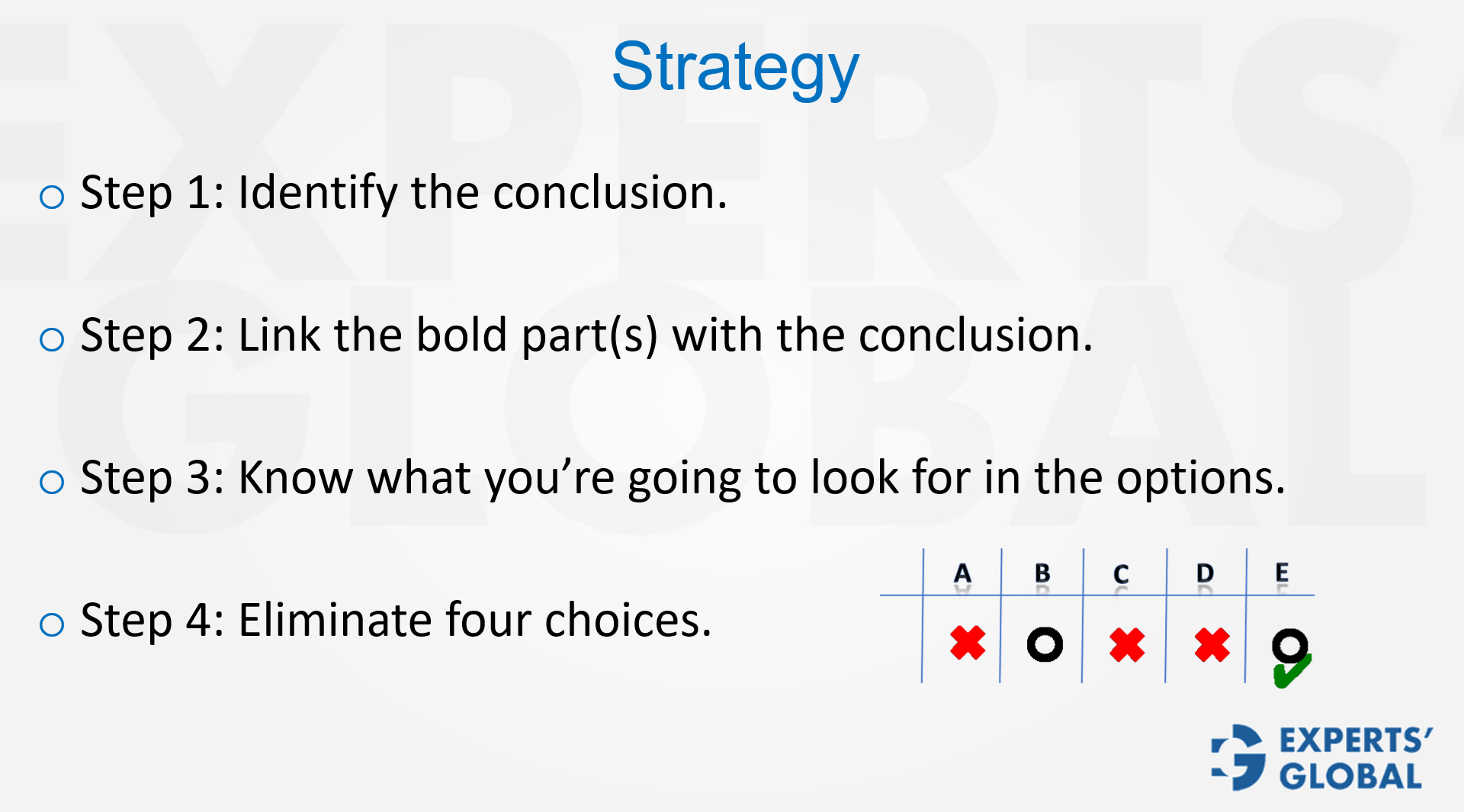Invest 30 seconds...
...for what may lead to a life altering association!
Help Line
- +91.8800.2828.00 (IND)
- 1030-1830 Hrs IST, Mon-Sat
- support@expertsglobal.com
...for what may lead to a life altering association!


A key difficulty in CR Boldface questions lies in the challenging vocabulary, which makes consistent practice with commonly tested words in critical reasoning an important element of GMAT practice. As part of this structured approach, we move through five vocabulary drills, and this article presents the third. Watch the video closely and then review the detailed explanation provided below.

In GMAT boldface questions, a passage is given with one or more portions in boldface. The task is to determine the role that those portions play in the passage. Because the vocabulary in boldface questions is often complex and correctly identifying the role of each bolded section is crucial, it is useful to work through a few vocabulary tests on this area.
Please read the following argument, carefully:
The GDP of Xitora has grown by 15% during the tenure of the current political party. This is the highest growth during any tenure over the previous 50 years. Since the GDP growth is a fine indication of the economic growth of a nation, the party must be applauded for its role. However, the recent opinion polls reflect a steep decline in the popularity of the party owing to its perceived softness on long-standing social and diplomatic issues. Therefore, the party is unlikely to win another term in the forthcoming elections.
Please go through the following list of terms. See which of these terms apply to the bolded portion. Once you have arrived at your answer, read further to see an explanation for each option.
GDP growth has been great –> party deserves credit –> party has been soft on other issues –> the party is not likely to win (main conclusion)
While this section is a conclusion, it is not the main conclusion. From the mind map, we can see that the main conclusion is that the party is not likely to win.
The section is an intermediate conclusion, drawn from the first half of the paragraph. It is not the main conclusion, but it is part of the chain on conclusions in this passage.
The section is not a fact, for sure, as it is clearly the author’s stance on a subject, not a firm reality.
As mentioned above, the section is the author’s stance on the subject, meaning that, on the GMAT, it can be called an opinion.
The section can also be considered to be the author’s judgment, on the GMAT, for similar reasons as to why it can be called an opinion.
The section is not an event or situation, thus it cannot be called a circumstance.
As the section is not a firm fact, it will not be considered a piece of evidence, on the GMAT.
The section is clearly not a prediction, as the author does not hypothesize upon any future events through it.
The section is, obviously, not an assumption.
The section can be called a consideration, but given its role in the passage, this would be a weak choice.
This boldface is not the main conclusion. The main conclusion of the argument is that the party is unlikely to win. Instead, the boldface is an intermediate conclusion or “a conclusion.” It represents a step in reasoning, where the author acknowledges a positive but then moves toward a negative overall judgment. It cannot be classified as a fact, since applause is a matter of interpretation. It is closer to an opinion or judgment, as the statement reflects the author’s evaluation rather than an objective truth. Circumstance, evidence, prediction, and assumption are not correct roles in this case.
Among the available roles, “a conclusion” (intermediate conclusion) is the strongest fit. While “opinion” or “judgment” can sometimes work depending on the phrasing of the answer choices, the construction of the argument clearly shows this as a conclusion reached midway, before the final conclusion is drawn.

Boldface questions assess the role of a statement, not its surface wording. A phrase like “The party must be applauded…” is best understood as an intermediate conclusion, not the main claim. Correct classification depends on linking each bold portion to the overall argument structure and identifying whether it functions as fact, judgment, evidence, assumption, or conclusion. Consistent practice in GMAT simulation develops precision, helping you distinguish layered roles and approach Boldface questions with clarity, balance, and accuracy.
Intermediate conclusions in Boldface questions remind us that progress is rarely linear – understanding grows through steps that lead toward a final realization. In GMAT preparation, this teaches us to value the small judgments and partial insights that shape the ultimate answer. In MBA applications, the same applies; every essay draft, interview reflection, and career choice builds toward a cohesive narrative. In life, too, wisdom lies in seeing each stage as purposeful.